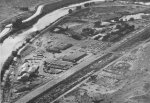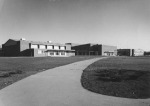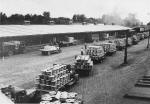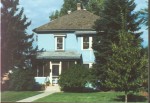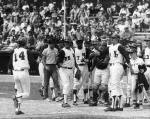
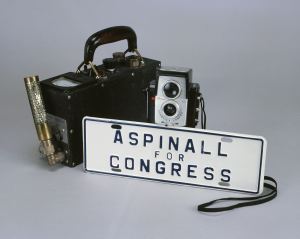
�Aspinall for Congress� automobile tags were common in Grand Junction during elections. Wayne Aspinall could always count on solid support in Mesa County. Geiger counters measure the radioactivity of uranium. Many Geiger counters were manufactured in Grand Junction during the uranium boom. Brownie cameras were inexpensive, simple to operate, and a favorite.
The 1950s
During the 1950s, the turbulence of
the Great Depression, World War II and Korean War were succeeded by a
nation focused on the pursuits of peacetime. Grand Junction also thrived,
and the uranium industry was an added stimulus. Population in 1950 was
14,504, a 16.2 percent growth through the 1940s.

